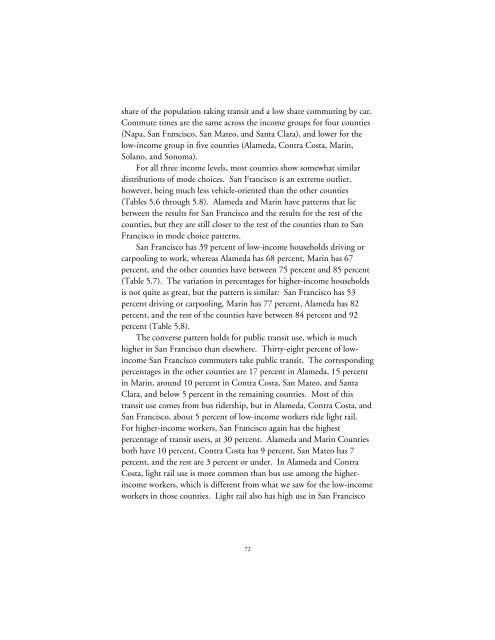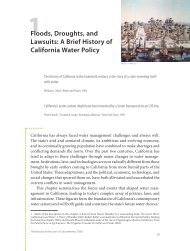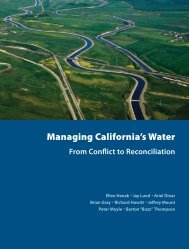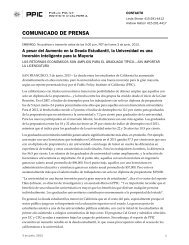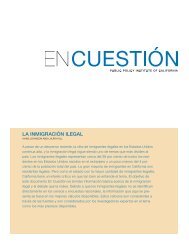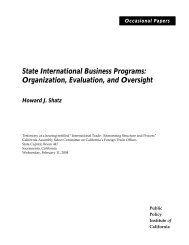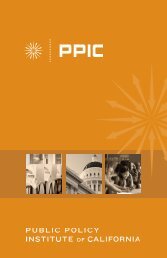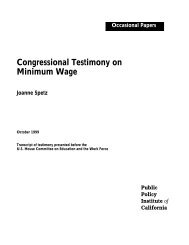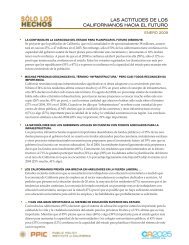Transportation Spending by Low-Income California Households ...
Transportation Spending by Low-Income California Households ...
Transportation Spending by Low-Income California Households ...
You also want an ePaper? Increase the reach of your titles
YUMPU automatically turns print PDFs into web optimized ePapers that Google loves.
share of the population taking transit and a low share commuting <strong>by</strong> car.<br />
Commute times are the same across the income groups for four counties<br />
(Napa, San Francisco, San Mateo, and Santa Clara), and lower for the<br />
low-income group in five counties (Alameda, Contra Costa, Marin,<br />
Solano, and Sonoma).<br />
For all three income levels, most counties show somewhat similar<br />
distributions of mode choices. San Francisco is an extreme outlier,<br />
however, being much less vehicle-oriented than the other counties<br />
(Tables 5.6 through 5.8). Alameda and Marin have patterns that lie<br />
between the results for San Francisco and the results for the rest of the<br />
counties, but they are still closer to the rest of the counties than to San<br />
Francisco in mode choice patterns.<br />
San Francisco has 39 percent of low-income households driving or<br />
carpooling to work, whereas Alameda has 68 percent, Marin has 67<br />
percent, and the other counties have between 75 percent and 85 percent<br />
(Table 5.7). The variation in percentages for higher-income households<br />
is not quite as great, but the pattern is similar: San Francisco has 53<br />
percent driving or carpooling, Marin has 77 percent, Alameda has 82<br />
percent, and the rest of the counties have between 84 percent and 92<br />
percent (Table 5.8).<br />
The converse pattern holds for public transit use, which is much<br />
higher in San Francisco than elsewhere. Thirty-eight percent of lowincome<br />
San Francisco commuters take public transit. The corresponding<br />
percentages in the other counties are 17 percent in Alameda, 15 percent<br />
in Marin, around 10 percent in Contra Costa, San Mateo, and Santa<br />
Clara, and below 5 percent in the remaining counties. Most of this<br />
transit use comes from bus ridership, but in Alameda, Contra Costa, and<br />
San Francisco, about 5 percent of low-income workers ride light rail.<br />
For higher-income workers, San Francisco again has the highest<br />
percentage of transit users, at 30 percent. Alameda and Marin Counties<br />
both have 10 percent, Contra Costa has 9 percent, San Mateo has 7<br />
percent, and the rest are 3 percent or under. In Alameda and Contra<br />
Costa, light rail use is more common than bus use among the higherincome<br />
workers, which is different from what we saw for the low-income<br />
workers in those counties. Light rail also has high use in San Francisco<br />
72


